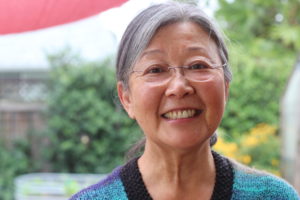
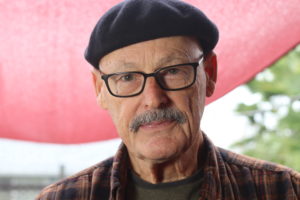
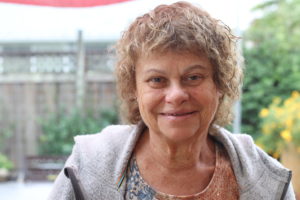
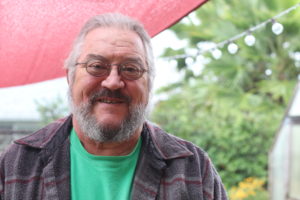
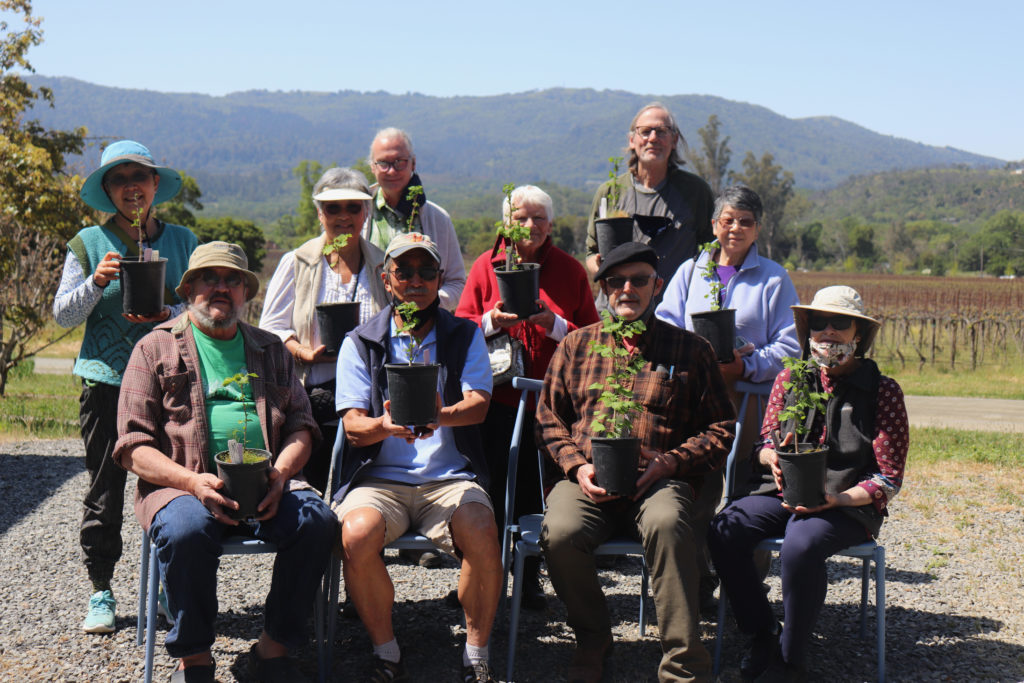
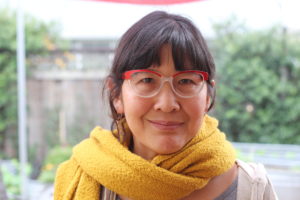
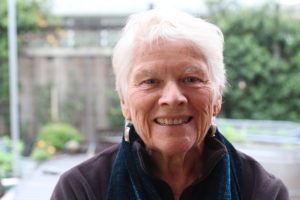
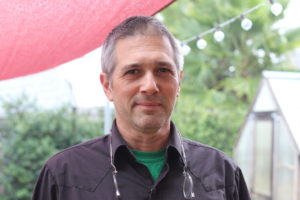
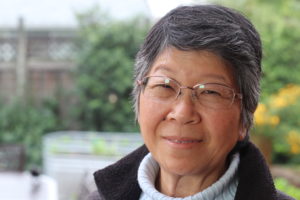
MEET PEACE CRANE PROJECT MEMBERS
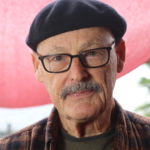
My father was an architect and an enthusiastic student of Japanese architecture, an enthusiasm that I share. He was very troubled by the wartime internment of people of Japanese ancestry. In his quiet way he helped preserve the property of Japanese-American neighbors and friends. After the war, he was entrusted to design a new Buddhist temple for the Japanese-American community forming in and around San Mateo. I vividly remember the dedication ceremony (at age eight or nine): the food, people’s clothing, the taiko drummers, and the celebratory mood.
Later, as a student at Berkeley I worked in the university library. One of my assignments was to care for the archives of the internment camps, a duty the library took very seriously. The archives were not available to the public but I was able to read many pieces that gave me a new perspective on my childhood experiences. I remember the school yearbooks, newsletters, and other publications that documented life in the camps; particularly how these communities, in spite of mistreatment and harsh conditions, reconstituted and maintained their uniquely Japanese-inflected American way of life.
My participation in the Peace Tree project flows from these experiences, and is also a way of honoring my father..
The Peace Crane Project envisions a world without nuclear weapons and stands up for an end to war. We remember and honor those Japanese American citizens who suffered the horrors of incarceration in US concentration camps during WWII only because they were Japanese. We invoke the memory of the thousands who were killed and those who survived the US atomic bombs that were dropped over Hiroshima and Nagasaki, only because they were Japanese.
——————
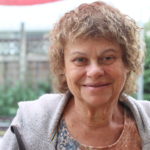
I understand the terrors of war. My mother was imprisoned in the Auschwitz and Bergen Belsen concentration camps for over 1 ½ years only because she was Jewish. Her parents, 4 sisters, their husbands and their children were killed in the Auschwitz gas chamber, only because they were Jewish.
I am a long time social justice activist and get a lot of strength from my mother and the family who I never knew. I understand the loss of family members who were murdered in Auschwitz, Hiroshima and Nagasaki. I grieve for all of them and this makes my resolve and activism that much greater.
——————
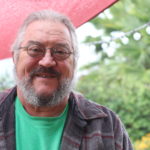
I was born in 1947, 2 years after the bombing of Hiroshima and Nagasaki. My grandfather left Bismarck’s Germany when he turned 18 in 1883 to avoid being drafted into the Crimean War. My father was a published pacifist, too young to be drafted into WWI and too old to be drafted into WWII. I was a conscientious objector and worked in a psychiatric unit for 2 years as alternative service.
In 1972, I became a War Tax Resister, refusing to pay 20 percent of my income taxes, the amount of the federal budget that went to nuclear weapons. I have resisted some symbolic amount most years since.
In 1983, I was arrested at Lawrence Livermore Labs, protesting their work on the nuclear arsenal. I spent 21 days in Santa Rita Jail. It was the first of many arrests opposing nuclear weapons, nuclear power, and militarism.
I joined the Peace Crane Project, then called the Hiroshima/Nagasaki Remembrance Committee, around 2005 to honor my friend, Betsy Eberhardt, a founding member, who died in 2004. I’m dedicated to remembering the horrors of those bombings, and working towards a world free of nuclear weapons and nuclear power.
——————
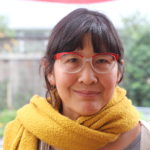
I was born in the United States in 1968. My father is Japanese and my mother is from Taiwan, which was under Japanese occupation. They were children during WWII and their memories of the war were very much alive when I was growing up. My dad talked of hunger. My mother remembered being evacuated to the countryside. The US military bombed Nagoya and Tainan, cities where my parents grew up. People lost their lives, family members, or homes. My mom used to say, “There is nothing good about war.”
When the US detonated a nuclear bomb on Hiroshima, 140,000 people perished. That is twice the population of Petaluma, the city I live in now.
I joined the Peace Crane Project because I do not believe that killing people resolves conflict. I am honored to be part of the effort to plant a tree, descended from ginkgo that survived the bombing of Hiroshima. These trees, which can live up to 3,000 years, carry in their DNA the memories of the horrors of war and speak powerfully of resilience and hope for the task of building a peaceful world.
——————
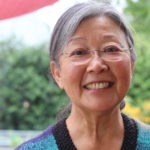
I was born and raised in the aftermath of World War II. Growing up, I could sense the terrible legacy of the war as my hometown, Kobe, was heavily firebombed. My parents’ generation were the most tragically affected by the war, and I was raised on the idea that war is wrong. One of my high school trips was to visit the Nagasaki Peace Museum. I was so sad and angry to learn how horrific the atomic bombing was.
In the mid 1990’s I started helping in the Hiroshima and Nagasaki Remembrance Day Events at Santa Rosa Courthouse Square. After several years, I got involved in planning the events.
I feel that peace, human rights, and environmental activism are all different facets of my spiritual journey. It does not make sense to me to spend so much energy, time and all sorts of resources producing tools of destruction meant for our enemies without seeing the impact that has on our own homes, ourselves, and our planet.
Now that I am a grandmother I have more reasons to help create a peaceful and sustainable world for my grandchildren and beyond.
——————
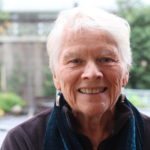
I was born in the north of England in February 1945, shortly before the end of World War II. Growing up, all the families I knew were affected by the war in some way.
In the 1970s, as part of the Cold War, the United States and the Soviet Union decided to site nuclear weapons in Europe, with the border between East and West Germany the dividing line between the two superpowers. A total of 464 missiles were slated for Western Europe, each one 15 times more lethal than the bomb dropped on Hiroshima, which decimated the city and incinerated thousands of people in an instant. I joined the massive peace movement that sprang up to oppose the terrifying possibility of nuclear war and this appalling waste of resources.
Years later, I was stunned to learn that several trees growing near the blast center survived the bombing of Hiroshima. When I heard that the Peace Crane Project wanted to get seeds from descendants of these hibakujumoku, A-bomb survivor trees, I was excited to participate.
These trees are powerful symbols of man-made destruction and nature’s resilience. Perhaps they can express people’s desire for peace more effectively than we can ourselves.
——————
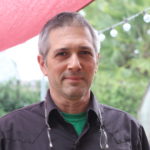
I grew up in New York City, knowing that if there was a nuclear war, we would be a top target. My building, like many others, had a soot covered “Fallout Shelter” sign. It was yellow and black and had a circle with 3 upside down triangles on it. I never saw the shelter and assumed it would be dark and dank and rat infested, not an adequate shelter in case of an attack. I remember the Three Mile Island nuclear accident in 1979 and knew there was a nuclear power plant just north of Manhattan called Indian Point. In 1982, when I was 11, I joined hundreds of thousands of other people for a massive Anti-Nuclear protest in New York City against nuclear weapons.
With new existential threats from Climate Change, the nuclear threat is still there and has only gotten worse in recent years. Some are trying to push nuclear energy as a solution to climate change. Peace Crane Project is a way to push for positive changes on these issues.
——————
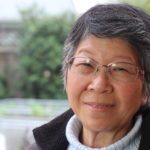
I was drawn to the Peace Crane Project because of their goal of working toward a world free of nuclear weapons. Growing up in California in the 1950’s I remember ducking under my desk at school for routine nuclear attack air raid drills and assuming I would be protected from an atomic blast if I did it correctly. Today, I am disheartened that the world still does not seem to have an understanding of the tragedy of using nuclear weapons and of believing that amassing a larger arsenal than our enemy will be a deterrent to war.
Being a ‘Sansei’ (third generation Japanese American) and growing up in the United States, I did not have firsthand knowledge of the horrors of the Hiroshima and Nagasaki bombings, however one of my grandfathers came from Kure, a village on the outskirts of Hiroshima. I had a chance to talk to a relative in Kure where he explained how he and his friends saw the huge mushroom cloud when the atomic bomb dropped. While he was talking, I remember thinking how my grandfather’s extended family could have easily perished had they lived just a few miles closer to ground zero.
Putting on activities that draw the public’s attention, like the annual Nuclear Remembrance Day and the Tree of Peace project, serve as reminders that we have to keep working for peaceful resolutions.
